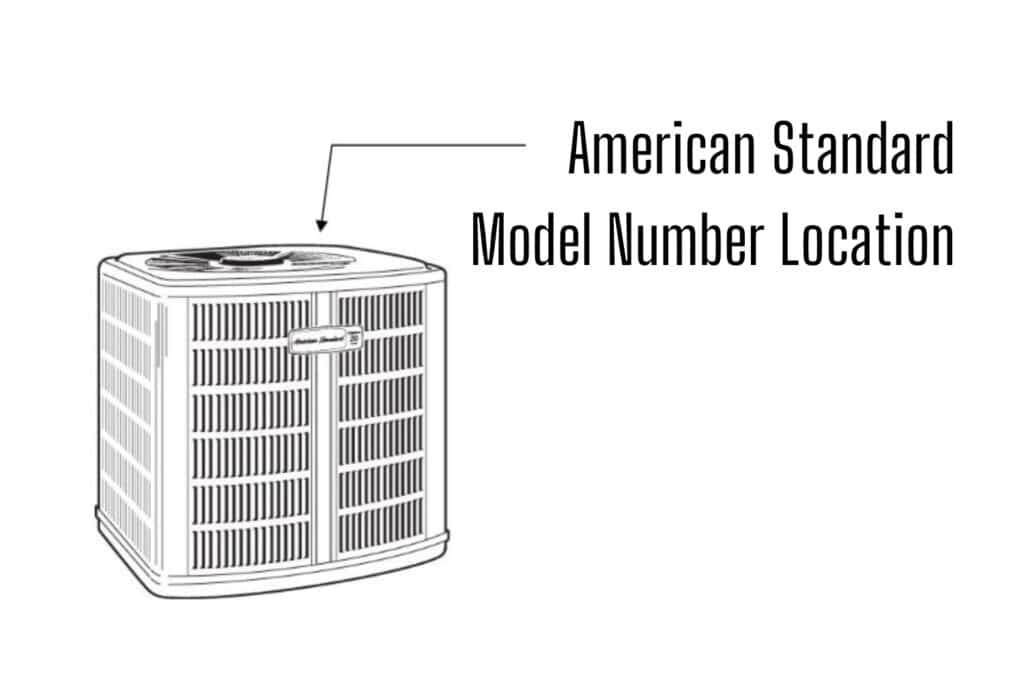As an HVAC technician, I often come across homeowners curious about the model number of their American Standard air conditioning or heating system. Model numbers are important because they help us identify the specific unit and its components, which can be essential for troubleshooting, repairs, and replacements.
Model numbers are unique digits and letters used to identify a specific product within a manufacturer’s product line. The HVAC industry uses model numbers to identify heating and cooling equipment such as air conditioners, heat pumps, and furnaces. Understanding model numbers is crucial for homeowners because it provides valuable information about the equipment installed in their homes.
The importance of understanding American Standard model numbers cannot be overstated. As a homeowner, having this knowledge can help you make informed decisions about your heating and cooling equipment, especially when replacing or upgrading your existing equipment. By understanding your AC size, efficiency, and other important features, you can ensure that you are making the right choice for your home and family.
How do I find the American Standard model number?
The location of the model number on your American Standard HVAC system will depend on the type of unit you have. For American Standard AC, it is usually on the outdoor unit for air conditioning systems.
Step outside to where your AC’s outdoor unit sits, probably looking like it’s just soaking up the sun. On most models, there’s a nameplate on the side – that’s your first place to check. It’s usually a metal plate or sticker that contains the model number, along with other important info like the serial number and technical specs.

For heating systems, the model number is usually located on the inside of the furnace or air handler. You might have to remove a panel or open a door, but it’s no more difficult than finding the last piece of candy in the box.
For the folks who keep their manuals organized (I salute you), this is a cakewalk. Flip open the user manual that came with your AC unit, and you’ll typically find the model number on the first few pages.
If you’re having trouble finding the model number, consult or contact the American Standard website. They’ve got resources to help you figure out where to look, or you can contact their support team to guide you through the process.
How do you read an American Standard model number?
You’ve found the model number and serial number of your American Standard HVAC. But it looks more like a secret code from an old spy movie than anything to do with your AC. No worries – I’m here to be your decoder ring.
Let’s break down what those digits mean on your American Standard model number:
First Digit: The Type of Unit
This is pretty straightforward. If you see a “4”, you’re chilling with an air conditioning system. An “8”? That’s a heater warming your toes. This digit is like the unit’s first name, telling you what family it belongs to in the grand scheme of HVAC systems.
Second Digit: Efficiency Ratings
For air conditioners, this number gives you the scoop on the SEER (Seasonal Energy Efficiency Ratio) rating. Higher SEER numbers mean more efficiency and less cash spent on electricity. If we’re talking heaters, it’s all about the AFUE (Annual Fuel Utilization Efficiency) rating, which tells you how well your unit converts fuel to heat.
Third and Fourth Digits: Powerhouse BTUs
These digits represent the unit’s capacity – its power to cool or heat your space. It’s measured in BTUs (British Thermal Units) per hour. More BTUs means more muscle to tackle extreme temperatures.
Fifth Digit: Electrical Details
Voltage and phase come into play here. This digit tells your electrician what they need to know about the power supply. It’s essential info for installation and repairs, ensuring your unit and your home’s electrical system are compatible.
Sixth Digit: Model Revision
Think of this like version numbers on software. It represents any updates or changes made to the unit since its initial release. A newer revision number could mean improvements or different parts, something to remember for repairs or replacements.
Other Digits: Unique Identity
Other digits may also represent additional information, such as the voltage, fuel source, and other specific equipment features.
Knowing these details can give you the upper hand when dealing with maintenance, repairs, or just showing off your HVAC knowledge. Like knowing exactly what kind of car you drive, knowing your model number’s ins and outs lets you make informed decisions and talk shop with technicians.
How many tons is my American Standard air conditioner or heat pump?
Heating and cooling capacities are measured in British Thermal Units (BTUs). A ton of air conditioning equals 12,000 BTUs, so simply divide the BTUs by 12,000 to find the tonnage of your HVAC system.
To find the tonnage of the America Standard air conditioner or heat pump, look for two digits that can be divided by 12. If you see one of these numbers, it’s probably the unit’s BTUs:
- 018 = 1.5 tons
- 024 = 2 tons
- 030 – 2.5 tons
- 036 = 3 tons
- 042 = 3.5 tons
- 048 = 4 tons
- 060 = 5 tons
Choosing the right size HVAC unit for your home is crucial to ensuring that your heating and cooling system works efficiently and effectively. An HVAC unit that is too small will struggle to keep up with demand, leading to inadequate heating or cooling. At the same time, a too-large unit will consume excess energy, resulting in unnecessary costs and wear and tear.
Well, there you have it, folks – we’ve dived into the nitty-gritty of American Standard model numbers and surfaced with all the knowledge we need. Understanding these numbers is more than just a party trick; it’s a way to ensure you’re in the driver’s seat regarding the care and maintenance of your home’s comfort system.
From the type of unit you’re dealing with to its efficiency, capacity, and even the specific version you have, each part of the model number has given us valuable clues. No more scratching your head when a technician asks for details and no more confusion when you’re trying to order parts or troubleshoot issues.
Remember, keeping your model number handy is like keeping a map in your glove compartment. You might not need it on every trip, but when you do, it’s invaluable. It helps professionals help you faster, ensures accuracy in repairs and parts, and can even make a difference in warranty claims.
If you have any questions or concerns about your equipment or its model number, don’t hesitate to contact a professional HVAC technician for assistance.






